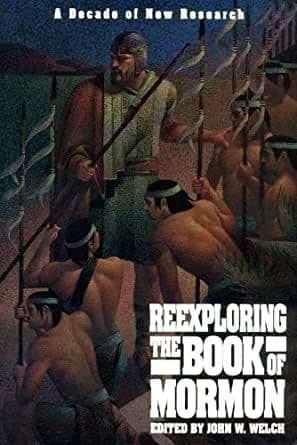Book
85 Chapters

Mosiah 7:22 “one half of our corn, and our barley, and even all our grain of every kind”
The December 1983 issue of the popular magazine Science 83 reported the discovery in Phoenix, Arizona, by professional archaeologists of what they supposed to be pre-Columbian domesticated barley. That same month, F.A.R.M.S. carried a preliminary notice of the discovery. This Arizona find is the first direct New World evidence for cultivated pre-Columbian barley in support of the Book of Mormon. Mosiah 9:9 lists barley among several crops that were cultivated by the Nephites in the land of Nephi, and Alma 11:7 singles out barley as the primary grain into which silver and gold were converted in the Nephite system of weights and measures.
That there are copious samples of cultivated barley at pre-Columbian sites in Arizona seemed a first for the Western Hemisphere, but Professor Howard C. Stutz of the BYU Department of Biology tells us that three types of wild barley have long been known to be native to the Americas. The real surprise is that this barley is of a cultivated (“naked”) type, although the ethnobotanist for the Arizona project, Dr. Vorsila Bohrer (Eastern New Mexico University, Portales), says that it is not yet clear whether the samples were truly naked (unhulled) or simply naturally degraded in context.
Archaeologists have been analyzing the barley samples retrieved from the Phoenix area and say that they are associated with material and strata generally dated c. A.D. 900. The same sort of naked hordeum pussilum was seen years ago in the Snaketown excavation of Dr. Emil Haury (University of Arizona, now retired). The Snaketown samples and more recent samples from archaeological contexts in Southern Illinois are said to be dated from A.D. 1 through 900.
Samples of similarly naked barley have also been found in context in eastern Oklahoma, although hulled samples from a cave in the Tonto National Monument raise questions (Dr. Bohrer suggests rodent activity may be involved in this instance). However, none of these samples has yet been radiocarbon dated, and it is not yet clear where the samples lie in the process of cultivation to true domestication. We await with interest further excavations, dating, and morphological examination to determine when and how the cultivation of this barley was begun, as well as its taxonomic relationship to New or Old World wild barleys.
The barley samples mentioned in Science 83 (as well as the earlier Snaketown samples) were taken from recent “salvage” excavations into the remains of the very important culture—the Hohokam—that existed in southern Arizona from approximately 300 B.C. to around A.D. 1450 (dates well established via C-14). After appearing in the area, possibly as immigrants from Mesoamerica, those people constructed a vast irrigation network (using water from the Gila and Salt rivers) that eventually covered ten thousand square miles and twenty-two “cities” and served a population estimated at from one hundred thousand to one million persons. At least forty thousand of these people lived in the immediate area of Phoenix. Pima Indians and even nineteenth-century Mormons have made use of some of the remnant Hohokam canals.
These recent excavations are known as “salvage” excavations because they were sponsored with federal funds in order to recover archaeological data being destroyed by construction in Phoenix. One of these Hohokam excavations, operated by Arizona State University and completed in 1983, was at the site of a new interchange on the Papago Freeway—a site long known as La Ciudad, “The City.” The Arizona State University archaeologists found 205 houses, a Mesoamerican-style ball court, and complete pottery vessels and other artifacts within a few feet of the surface! From oral descriptions given by Dr. Glenn Rice of Arizona State University, there was clearly wide-ranging trade with northern Mexico, with which Hohokam culture had much in common.1
What happened to ancient American people such as the Hohokam demands better explanation than we now have. How the information from Arizona, or indeed from Illinois, Oklahoma, Louisiana, or Peru, fits with the Book of Mormon cultural information needs to be spelled out. Were the Hohokam and their barley directly or indirectly related to the Nephites and their barley? Perhaps the shipping activities of Hagoth, who sailed north from the Nephite narrow neck of land (see Alma 63:6-10), will play a role in that explanation.
Based on research by John L. Sorenson and Robert F. Smith, December 1984. For further information about the role of barley in the ancient Egyptian and Mesopotamian systems of weights and measures, see the F.A.R.M.S. paper, “Weights and Measures in the Time of Mosiah II” (1983).
1. For an informative article on the Hohokam ruins at Snaketown and elsewhere, see Emil W. Haury, “First Masters of the American Desert: The Hohokam,” and Kenneth F. Weaver, “Magnetic Clues Help Date the Past,” National Geographic 131 (May 1967): 670-95 and 696-701.
Book
85 Chapters
Items in the BMC Archive are made publicly available for non-commercial, private use. Inclusion within the BMC Archive does not imply endorsement. Items do not represent the official views of The Church of Jesus Christ of Latter-day Saints or of Book of Mormon Central.